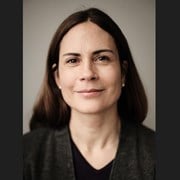“You can interpret things any way you want. There’s no special idea behind it all”, says Hamdi.
She and the other ninth graders from Bjølsen school are attending a workshop organised as part of an EU research project called ARV. The theme is redesign and recycling. They are making art out of materials recycled from the old locker room building that once stood on the site of the new Voldsløkka school. The symbolic value of recycling is their main focus.
Hamdi and the others in her group, Øystein and Nora, all agree that they want to make abstract art with a key emphasis on lines and colour combinations.
But others are thinking differently.
“We want to make something with meaning – not just abstract”, explains William. “So this will represent the sky, clouds and two mountains”, he says.
“It’s a sort of blue spiral”, says Mari, showing us what she and the others in her group are making.
But not all art turns out as planned.
“There were going to be red clouds in a blue sky, but we ended up with a river – or both!”, say Ingvild and Anahita.
Katja still isn’t quite sure. “I’m just trying not to mess it up”, she says.
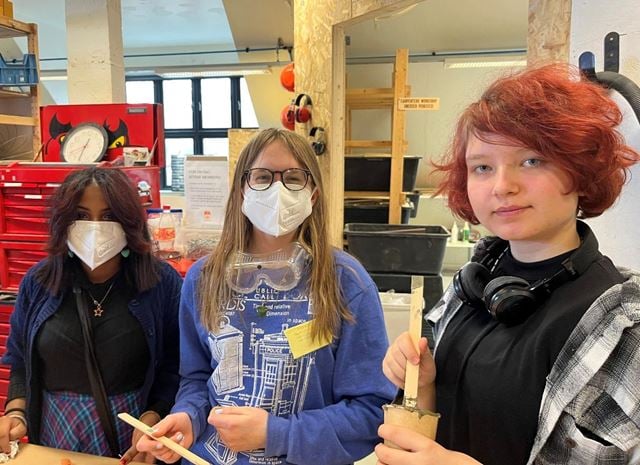
The pupils are more than pleased just to have something different to do at school. Photo: SINTEF
Using a secondary school as a demo project
The workshop that the pupils are attending is part of a major EU-funded research project in which Oslo municipality, and Voldsløkka school and Culture Centre are together acting as a pilot. The workshop is the first activity being carried out at the Voldsløkka Living Lab, which is looking into user involvement and has been planned in close collaboration with the head teacher at Voldsløkka school and teachers from Bjølsen school.
During the three-day workshop, pupils have been given information about the project firstly by two artists, and then by researchers from NTNU and SINTEF who are working on the ARV project. They have since made sketches and a plan for an art project.
In order to produce the art they have planned, they are occupying the open workshop arena Bitraf at Akerselva, to which the two artists are affiliated.
“We got to know two artists, both of whom want to work with materials recycling. The idea for the workshop grew out of that”, says SINTEF researcher Judith Thomsen. “Some of the materials come from a demolished building at Voldsløkka. The pupils were very familiar with the old building, which is now providing them with materials for their artwork”, she says,
In August, the pupils now at Bjølsen school will be starting at Voldsløkka school.
“Young people represent a key target group in the Norwegian demo project”, says researcher Ruth Woods at NTNU, who is heading the Living Lab activities taking place at Voldsløkka. “One of the aims of our collaboration with Voldsløkka school is to increase awareness of climate issues in the local community, and not least via the schools”, she says.
Hastening the construction sector’s transition to a circular economy
Vaar Bothner and Jenny Ueland are the artists who contacted head teacher Kjersti Svendsen at Voldsløkka school, suggesting that art might be introduced to the ARV project. They have been preparing and leading the practical aspects of the workshop and offering guidance to the pupils.
At the same time, they have been preparing an independent art project, also based on used materials, that will be ready for the opening of Voldsløkka school in August.
Bothner is a qualified landscape architect. One of her current projects is a series of children’s books about issues linked to the environment and climate change. Ueland is a qualified architect specialising in sustainable architecture, but is now working as a practising artist. She also teaches architecture and art at the Edvard Munch Upper Secondary School.
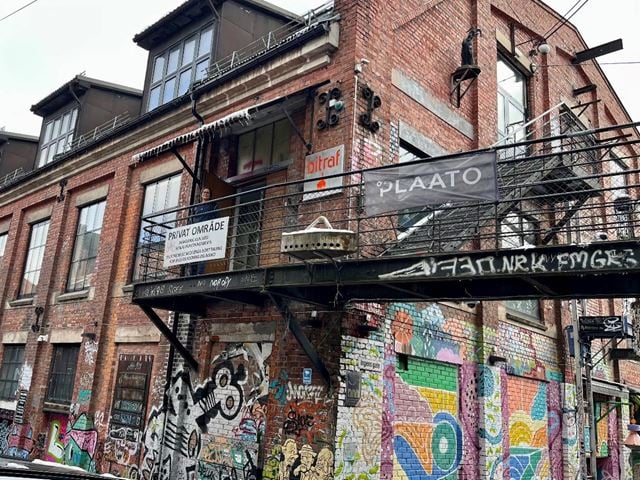
SINTEF researcher Judith Thomsen outside the creative workshop called Bitraf. Photo: SINTEF
According to Bothner, both architects have been leaning more towards art.
“Our experience as design architects has exposed us to the major challenges faced by the construction industry as it tackles the green transition”, she says. “At the same time, we’ve become aware of the enormous potential inherent in the recycling of building materials, and this developed into the launch pad for the exhibition we put on at the Sorgenfri gallery last autumn. We’ve simply taken this concept a step further after joining the ARV project”, says Bothner.
What is the ARV project?
The project ‘ARV – Climate positive circular communities’ is a research project funded via the EU’s Green Deal programme (Call 4.1 – Building and renovating in an energy and resource efficient way.
The vision behind the project is to contribute towards a rapid and wide-ranging implementation of so-called ‘Climate-Positive Circular Communities’ (CPCCs) where people can thrive and prosper for generations to come.
The overall aim is to demonstrate and validate attractive, resilient, and affordable CPCC solutions that will significantly speed up the deep energy renovations and deployment of energy and climate change mitigation measures in the construction and energy industries.
To achieve this, activities shall initially be carried out as part of six demonstration projects that are also transformation projects, located in six European cities. The projects aspire to high ambitions in terms of societal, economic and environmental sustainability.
The ARV project has 36 participating partners, including research centres and universities, architect and engineering firms, municipalities, as well as several suppliers of innovative products in the fields of eco-friendly construction and renewable energy. The partners are based in the following countries: Norway, Denmark, the Netherlands, the Czech Republic, Italy, Switzerland, Spain and Belgium.
The project is being headed by NTNU, with both SINTEF Community and SINTEF Industry also taking an active part.
Voldsløkka School and the Culture Station have been designed and constructed by the municipal housing development agency Oslobygg KF. SINTEF and NTNU are acting as research partners. The project has been designed as part of a joint collaboration between the enterprises Oslobygg KF, Spinn Arkitekter, Kontur Arkitekter and landscape architects Østengen & Bergo. The company Veidekke is the principal contractor.
The artists emphasise sustainability in their work and are preoccupied in particular with how art based on local, recycled materials can contribute towards creating continuity between the past and present. They want to use art to promote an awareness of the opportunities available to the construction sector in the circular economy. Their overall ambition is to hasten the sector’s transition from linear to circular thinking.
“We believe that an important step is to create an identity surrounding community-related themes. This is why school pupil involvement is a good place to start”, says Ueland.
“The workshop enables young people to work in a positive way with issues related to sustainability”, she says. “Their artwork allows them to experience at first hand the potential that lies in used materials. We believe that this can change their behaviour as consumers, and at the same time empower them to identify with the concept of recycling”, says Ueland.
Enjoying being creative together
Looking at this dedicated group of pupils from Bjølsen school, you would hardly believe that today’s students have problems in concentrating on their work.
“This is something that none of us has ever done before”, says Fatmeh. “We’re all learning something new”, she says.
“It’s cool! – and something a bit original”, says Lucas.
Nora agrees. “This is fun”, she says.
In answer to the question about what they have enjoyed most about the workshop, many pupils remark on the breaking of the tiles. Something else they talk about is the freedom they have to work exactly as they like, with something that is very different from everyday classwork and, not least, the ‘vibe’.
The pupils are very pleased to have the chance to be creative and to have something ‘cool’ to work with. Many of them have also enjoyed the chance to seek out solutions by working together in groups.
When asked about what they enjoyed least, several told us that there might have been more breaks and a little less waiting around. Many would have liked greater artistic freedom, complaining that “they’ve been very specific about exactly what we have to make”.
The finished art will be exhibited at the new Voldsløkka school when the entire ARV project consortium assembles for a meeting in Oslo from 24 to 26 May. Researchers will gather from all the European partner countries including the Netherlands, the Czech Republic, Italy, Spain, Belgium, Denmark, Switzerland and Norway. Some of the pupils will be invited to present the art they have produced.
Here are some more photos taken during the workshop:
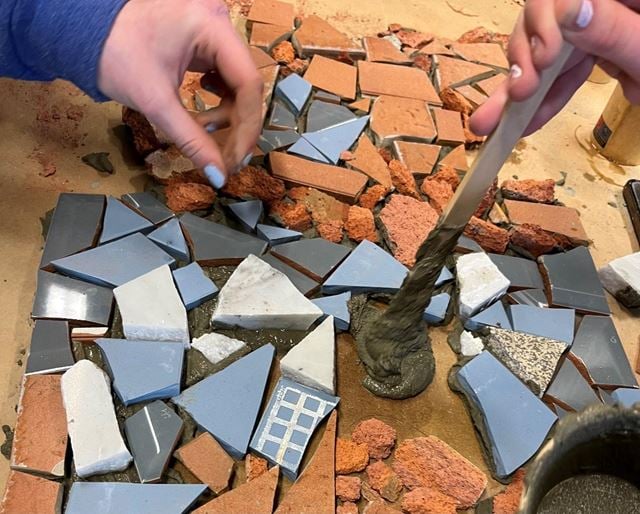
The materials are being glued to the substrate with high levels of precision. Photo: SINTEF
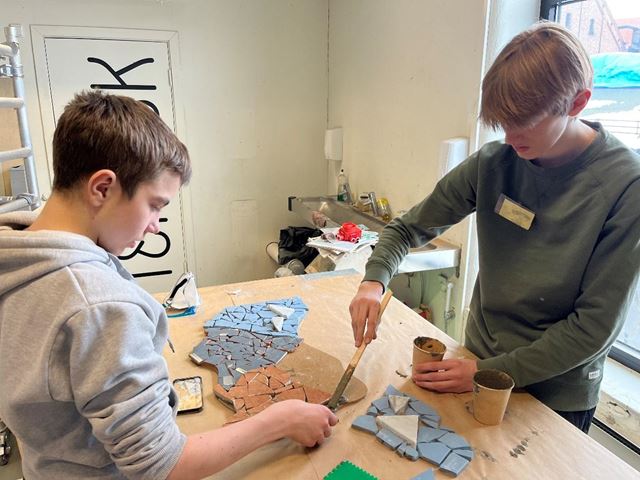
These boys are having no problems with their concentration. Photo: SINTEF
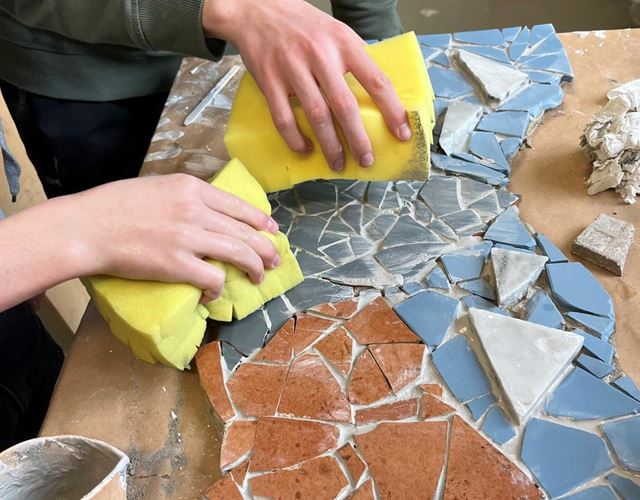
It’s important to remove the grouting from the tile surfaces! Photo: SINTEF
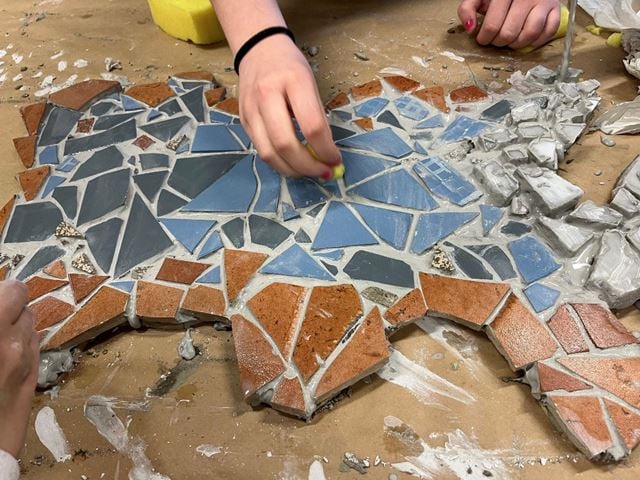
The art is beginning to take shape. Photo: SINTEF
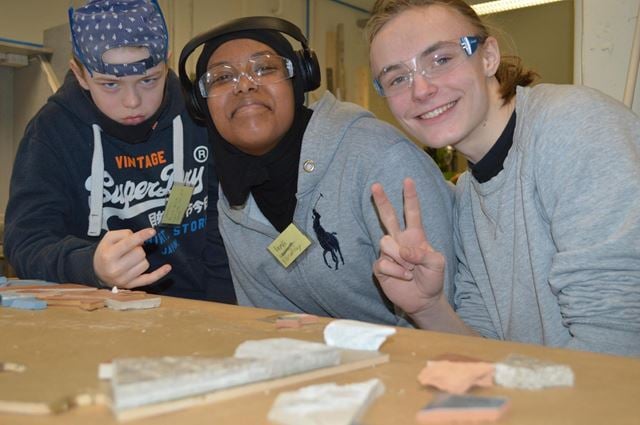
Peace! Photo: Lillian Sve Rokseth/SINTEF

